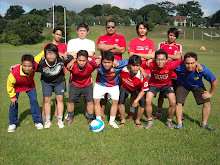Types of higher education institutions
The Higher Education Division of the Ministry of Education will coordinate and monitors the activities of institutions of higher learning in Malaysia, while the administration of polytechnics falls under the jurisdiction of the Technical and Vocational Education Division of the Ministry. Institutions of higher learning can be classified into three categories: polytechnic, college and university.
Polytechnics:
Polytechnics were established in 1969 to provide training in engineering and commerce to students specialising in technical and vocational areas. The students graduate with diplomas and certificates. The entry requirements for polytechnics are the SPM/SPMV qualifications or equivalent. The full time programme for the diploma award is three years and two years for the certificate. Presently, there are six polytechnics: Politeknik Port Dickson, Negeri Sembilan; Politeknik Ungku Omar, Perak; Politeknik Sultan Abdul Halim Mu’adzam Shah, Kedah; Politeknik Sultan Haji Ahmad Shah, Pahang; Politeknik Kota Bahru, Kelantan; Politeknik Kuching, Sarawak. Institut Tun Hussain Onn, Batu Pahat is the training centre for the polytechnics’ academic staff.
Colleges:
Malaysia has thirty teacher training colleges, besides that, there are two public colleges, i.e. Institut Teknologi MARA (ITM), and Kolej Tunku Abdul Rahman (KTAR). ITM was set up in 1956 and KTAR in 1969. These Colleges provide certificate, diploma and pre-university programmes especially in the fields of commerce, applied science and technology.
Universities:
Malaysia has nine public universities, one international, and two institutes which will be upgraded to university status. These institutions play the major role in the development of Malaysia. Presently, Malaysia still depends a great deal on foreign universities, especially in the United Kingdom, United States, Australia and New Zealand to provide higher education for its students. Malaysian universities provide diploma, undergraduate and post-graduate study programmes. The locations and the academic core areas of these universities are shown in Figure 2. Besides the public institutions, there are more than 300 private institutions/ centres/ colleges, which are involved in the provision of some form of tertiary educaion, and of this number, 23 of them are engaged in “twinning programmes” mainly with universities in the United Kingdom, United States, Canada, Australia and New Zealand. The passing of new legislation on education recently is part of a major comprehensive reform of the country’s higher learning; private universities have been established, led by Universiti Telekom (UNITEL), Universiti Tenaga Nasional (UNITEN) and Universiti Teknologi Petrcnas.
UNIVERSITIES IN MALAYSIA AND AREAS OF SPECIALISATION

Besides that, higher education can improve quality of life which it gives benefits to the individual and all the people in the world.







